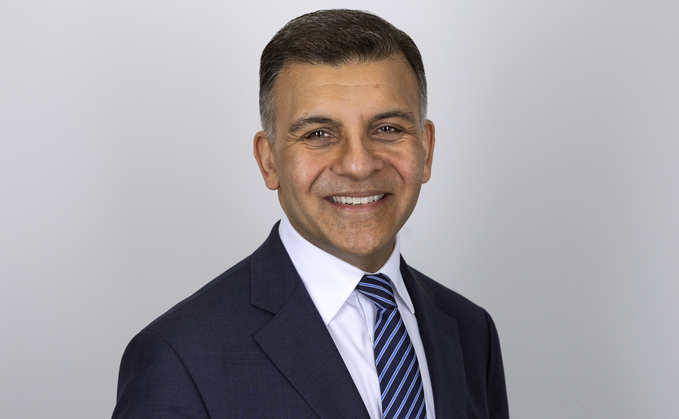
Raj Mody: Keeping the flame alive
It has long been thought that the Olympic flame burns between Games, a powerful symbol of continuity. In reality, the flame is re-lit just before each Games; it burns brightly for the duration of the competition, before being extinguished until the next time.
Pensions cannot be treated in the same way. Too often, though, that's how we approach them. Bursts of activity around campaigns like Pension Awareness Week are followed by long periods of neglect. If we are serious about tackling retirement adequacy, we need to pay our pensions some attention all year round. And we need all involved in the pensions industry to work together to create something more enduring – an engagement model that burns continuously like the flame is believed to.
Engagement
Concerns about retirement adequacy have dominated pension policy for years. The familiar levers to address this, such as compulsory contributions, changing tax incentives, extending working lives, or boosting the state pension, are imperfect, even when used together.
Against the current economic and demographic backdrop, some of those options look increasingly untenable. However, speculation over pensions policy at each Budget often centres on these same levers, which is particularly unhelpful when it involves short-term changes to what should be long-term decision-making.
It is time we focused these conversations on what some call "engagement". What does that mean? It's about how actively people want to contribute to their pension saving, how much attention they pay to the choices they need to make, and how deeply they understand the value of what they are building. Without it, people remain disconnected from their savings, unaware of how their pot is performing, where their money is invested, or what small changes today could mean for their future. This lack of participation limits contributions, reduces confidence, and risks leaving pensions trailing behind other financial products that offer greater immediacy and visibility.
If adequacy is to be achieved, both industry and government must go beyond traditional policy tweaks and focus more on encouraging savers to engage with their pensions. Providers then must follow through by making pension products easier to understand and interact with, using better tools, clearer information and more personalised support.
A good example would be retirement calculators, which are common within the industry. The one from Smart Pension was designed to take into account savers' behavioural patterns, helping turn awareness into follow-through by prompting people to adjust contributions immediately rather than letting good intentions drift. Providers need to create an environment that rewards engagement and makes long-term investment feel worthwhile. If we want people to invest more for their future, we need to make pensions feel like assets they manage, not deductions they endure.
Savers in the dark
Auto-enrolment has rightly been hailed as the success it is. It has brought millions into workplace pensions who may otherwise not have saved. But the reality is that over half of savers are completely unaware of how their pension is performing, many of whom do not know what or how to check, or even that they ought to check their pension. And so, from an engagement perspective, the ease of automatically deducted contributions with minimal input or choice from the saver is a double-edged sword. It can leave savers in the dark about the nature and adequacy of their retirement finances.
For many, pension contributions are seen as money taken away rather than the sound financial investment that they are. This is increasingly so amidst the ongoing cost-of-living crisis, particularly among younger generations. Research carried out by Smart Pension showed that a third of Gen Z savers, those born between the late 1990s and the early 2010s, had considered pausing their pensions contributions because of current financial pressures. Yet 80% of this same generation also believe that the State Pension age will continue to rise. The dilemma: we now have whole generations of the population with little practical, emotional or financial connection with their workplace pension pot, even though it will one day be central to their quality of retirement. This is not just a pension problem; it is a life problem. And until that gap is addressed, decent retirement outcomes for the majority will remain out of reach.
Lessons from elsewhere in financial services
This lack of engagement comes into sharp relief when we consider the range of alternative investment decisions against which pensions are competing. Financial services have digitised their offerings at a rapid pace in the past decade. Retail investment apps allow anyone to start investing with just a few taps. The volatile world of cryptocurrencies lures millions with the promise of immediacy and control. Banking apps now allow you to manage household budgets, access rewards, invest in a wide range of opportunities, and purchase other products such as insurance and eSIMs for travelling abroad.
These services succeed because they provide interaction, ownership, convenience and accessibility. They are relevant now. By contrast, pensions feel distant and opaque. People need to see their pension as an active, valuable asset that grows and responds to their decisions, just like any other investment. According to research from the Department for Work and Pensions, when people understand their pension and want to play an active role in managing it, they typically make smarter decisions and higher contributions over time. Here's where pension providers can help. Accessible information, better-designed tools and greater transparency over where savers' money is invested can all encourage more frequent check-ins. Good design drives engagement and higher engagement yields better outcomes. Providing easy-to-understand transparency over investment choices helps people see their pension as something they actively manage rather than passively hold.
As an industry, we need to look at how other financial services have used technology to reach and proactively engage their customers. Pensions may not be able to compete with the immediacy of digital banks or the allure of higher-risk investments, but they can learn from their design to offer something different: clarity, control, relevance and the reassurance of a long-term plan. We can offer apps which, at a glance, show your current balance, fund performance, projected outcomes and the impact of changing contributions. Smart Pension has taken this further, eliminating paperwork and allowing savers approaching retirement to manage the whole process digitally, including accessing their pension payments through the app.
Savers need clear and personalised prompts: a suggestion to make an extra contribution when you've received a pay rise or a bonus, or a dashboard that translates abstract numbers into tangible goals and targets. Savers benefit from interactive tools that make their choices visible – showing where their money is invested, how it is performing and what their decisions could mean for their retirement.
Pensions aren't like the Olympic Torch - repeatedly extinguished and relit. We just need to keep the flame alive all the way through our working lives.
Raj Mody is chair of the Smart Pension Master Trust and the former global head of retirement and pensions at PwC






